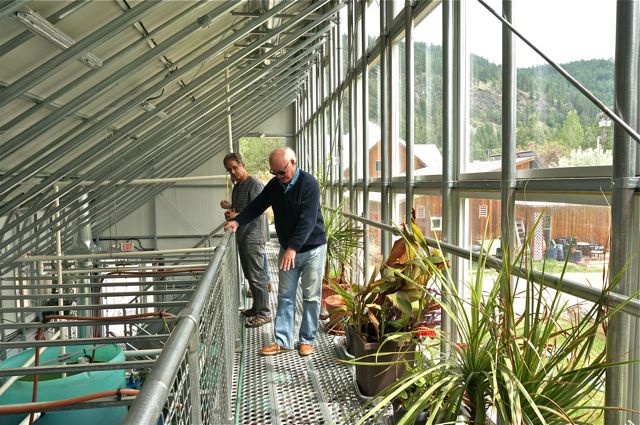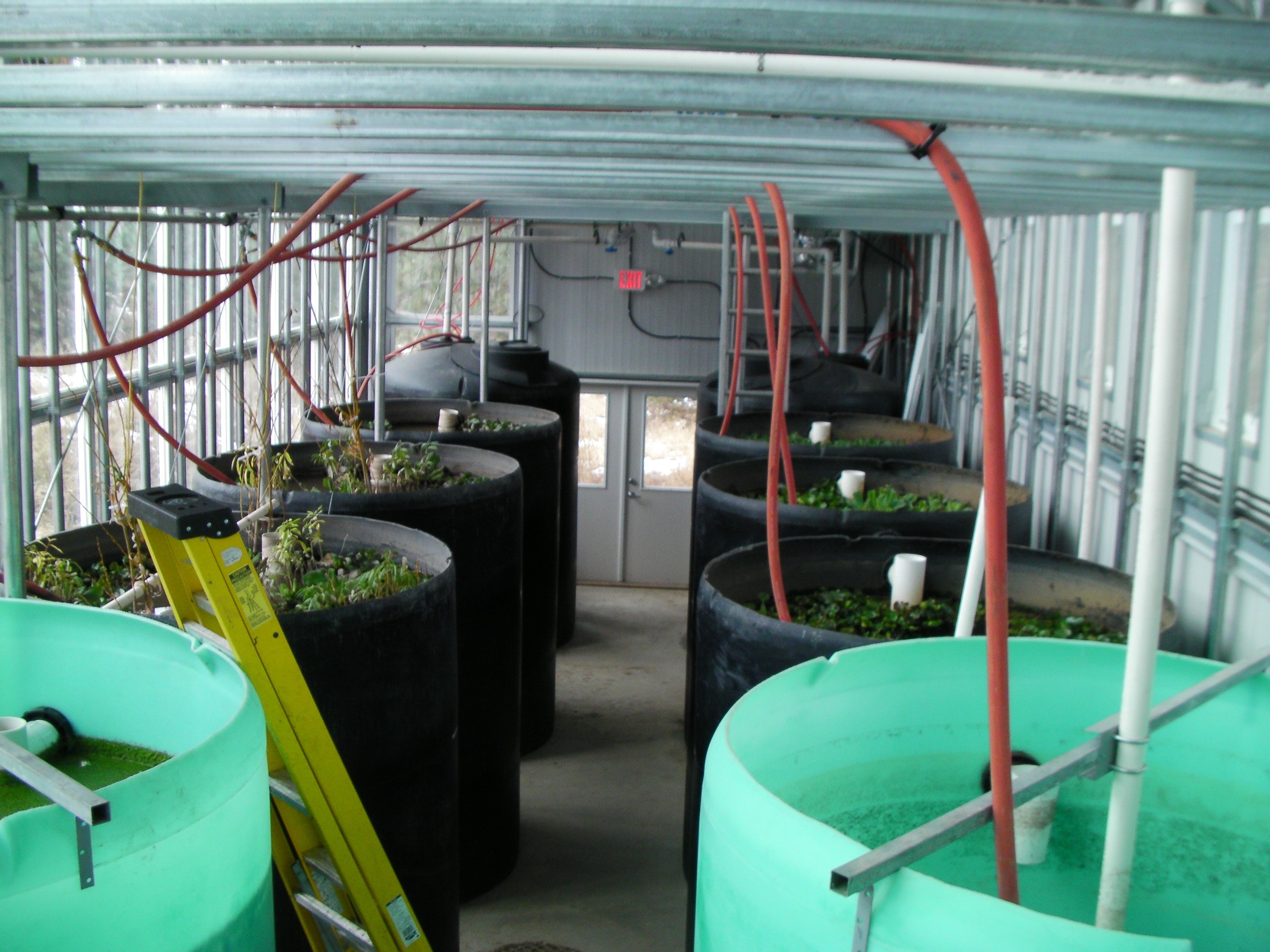Sustainability
Christina Lake Welcome Centre Ecological Features
The Centre was originally designed to conform to LEED (Leadership in Energy and Environmental Design) Silver standards, but because of the added and considerable costs involved in the Certification process, plus some changes to the LEED rules which happened midway in construction, we decided to forgo the certification, knowing that it was still the most environmentally friendly building we could build and could set an example for other construction in our region.
Nearly all of the contractors hired were local, thus increasing the local knowledge of “green” construction and keeping the money in the local economy. Nearly $2m was raised to build it, and because of a huge amount of volunteer effort, the building was constructed mortgage free!
The features are numerous, staring with the clearing of trees in the park; all trees were chipped and the chips put on existing trails in the Nature Park, or made into firewood .
The foundation was formed with eco-friendly oil (vegetable based) being applied to the cement forms.
Roxul insulation, locally sourced and produced, was used throughout the building. The walls are 25 cm (10 inches) thick, using staggered stud construction, and filled with mineral wool insulation.
Eco-friendly foam insulation was used in much of the roof cavities as well.
All of the timber frame and cedar siding came from a local sawmill and tree farm (Son Ranch) using dead standing timber and the studs were all beetle killed pine also sourced locally. The only live tree used in the building was a large cedar tree which was carved by Indigenous carvers to represent the native tribes that used the area as their hunting and fishing grounds.
All of the finishes used on the timber frame were iron oxide (rust) based and all paints in the building have extremely low VOC’s (volatile organic compounds).
All drywall waste was diverted from the landfill by installing it into the wall cavities which served as further sound insulation and fire retardant.
The design of the building allows for passive solar gain through the south facing windows of the mezzanine
The heating and cooling of the building is accomplished geothermally through two 5-ton heat pumps which use groundwater as a heat source.
The floor is the source of radiant heat, which gives more heat to the lower parts of our bodies, thus allowing it to be kept at a lower temperature to achieve a comfortable warmth.
Two Living Roofs grace the lower ends of the building… they are planted with a mixture of sedum and moss and serve to increase the insulation factor during the winter, and cooling of the building in summer through green shading and evaporation.
A large solar hot water panel sits on the roof to supply most of the domestic hot water needs.
All of the building’s waste water is handled by a Solar Aquatics System in a separate building, which uses plants and microbes to break down the waste naturally and cleanse the water before returning it to the aquifer. It was built with the capacity to accommodate other buildings and businesses in the area, should they wish to connect to it. It is only one of three such systems in BC at present.
All lighting within the building uses either LEDs or CFL’s.
The patio and walkway around the building is composed of pavers created from recycled tires, with the help from a grant from BC Tire Recycling.
Most of the windows in the building were sourced from a building materials recycle centre, and feature low E thermal insulation.
The main road constructed for the building access was topped with RAP (Recycled Asphalt Product) to help deter erosion and dust.
Bio swales, which capture and cleanse excess water, were constructed to handle run-off from the roads and roofs
All of the planting around the exterior is drought tolerant and requires very little water to survive.
Solar Aquatics System
Also on the property is a state of the art Solar Aquatics Eco-Machine waste water processing system that was built with RDKB funds.
Recently world renowned scientist, Dr. John Todd, the founder of this amazing technology, toured the facility and shared some of the latest biological and technological research developments and possible upgrades for our facility.
We are working toward training more local residents in the daily operations so that the existing system can be used as an educational facility. Elementary, High School and University science students can observe the different ways that plants, air and beneficial bacteria work together to clean the water, using nature as a model. What better way to introduce our young people to lessons in ecology, engineering, and environmental stewardship.











